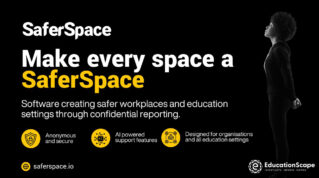ED&I. When I reflect on what those three letters have meant to me and my students throughout my FE career, I’m proud of what I’ve achieved and of how far the sector has evolved. However, there is still a journey ahead; I know a number of my peers still struggle to make it part of their teaching.
For me embedding equality, diversity and inclusion has never been ad hoc or a novelty. It has enriched my classroom practice in many ways, but more importantly it has allowed my learners to see themselves reflected back through the curriculum. The level of engagement that has come from that is uncanny, and seeing it come to fruition is always a pleasure.
This holds true irrespective of the learners you have before you. Even a group lacking in diversity – or not diverse at all – will benefit from incorporating ED&I. There is not a class I have taught where the value of engaging with thoughts, ideas and concepts outside of learners’ lived experiences hasn’t been immediately obvious.
There are endless possibilities and often so many unknowns within ED&I, so I will attempt to demystify it. If you’re not sure where to start, my answer is an obvious one: at the very beginning.
A labour of love
In my experience, ED&I must be embedded at the earliest stage of planning – be that a curriculum intent document, scheme of work or lesson plan. For example, when planning lessons I always start with the area of ED&I I would like to embed before I think about how I am going to teach the skill.
Whether it’s anti-racism, LGBTQIA+ inclusion or disability awareness, I decide the message that is going to underpin the teaching of the skills, assessment and overall thematic tone of the lesson. Once I have determined this, I begin to do research, compile resources and plan assessments that incorporate the theme.
As an English specialist, my subject organically lends itself to being diversified through exposing learners to a multitude of texts. However, any area of the curriculum – academic or vocational – can be enhanced in this way. All it takes is a little labour of love.
Any area of the curriculum can be enhanced in this way
Simply start by researching the profile of an under-represented group you wish to embed in the lesson. It could be the profile of neurodiverse people within construction, the number of women in engineering, Middle Eastern and African architecture, statistics from the Windrush movement. The possibilities are endless.
I recently taught a lesson on speech writing while introducing my learners to European standards of beauty. Challenging those standards stirred up passions. In turn, this led to powerful speeches as my learners competed to create the most impactful language devices to illustrate their points of view.
An arduous task?
But why do it at all? For some, starting at the beginning might mean going a little further back than the planning stage. Often we can feel inflicted upon by wider organisational priorities and start to perceive ED&I as the ‘agenda of the week’ – to be resented or avoided until it falls off the long laundry list of disdain.
ED&I is too important and fundamental to fall into obscurity, and the key to engaging everyone is to demonstrate how it applies to each of us. Where does your desire to teach find its genesis? What groups do you personally represent, knowingly or unwittingly? What are the unique aspects of your identity as a lecturer, and how do these impact on what you bring to the classroom? This may not be comfortable, but it will be cathartic.
But in the end, the single most impactful element of all the ED&I training and CPD I’ve done has been drawing attention to diversity as a strength within the classroom. The peer learning that springs from bilingualism, how cognitive diversity impacts problem solving, the richness of creativity and arts from different cultures. These are not dispensable add-ons but essential components of learning.
ED&I requires us to expand what we value as conducive to learning and as essential cultural capital.
Anything short of that would be the antithesis of inclusion and will feel like an arduous task – instead of the labour of love that it is.













Your thoughts